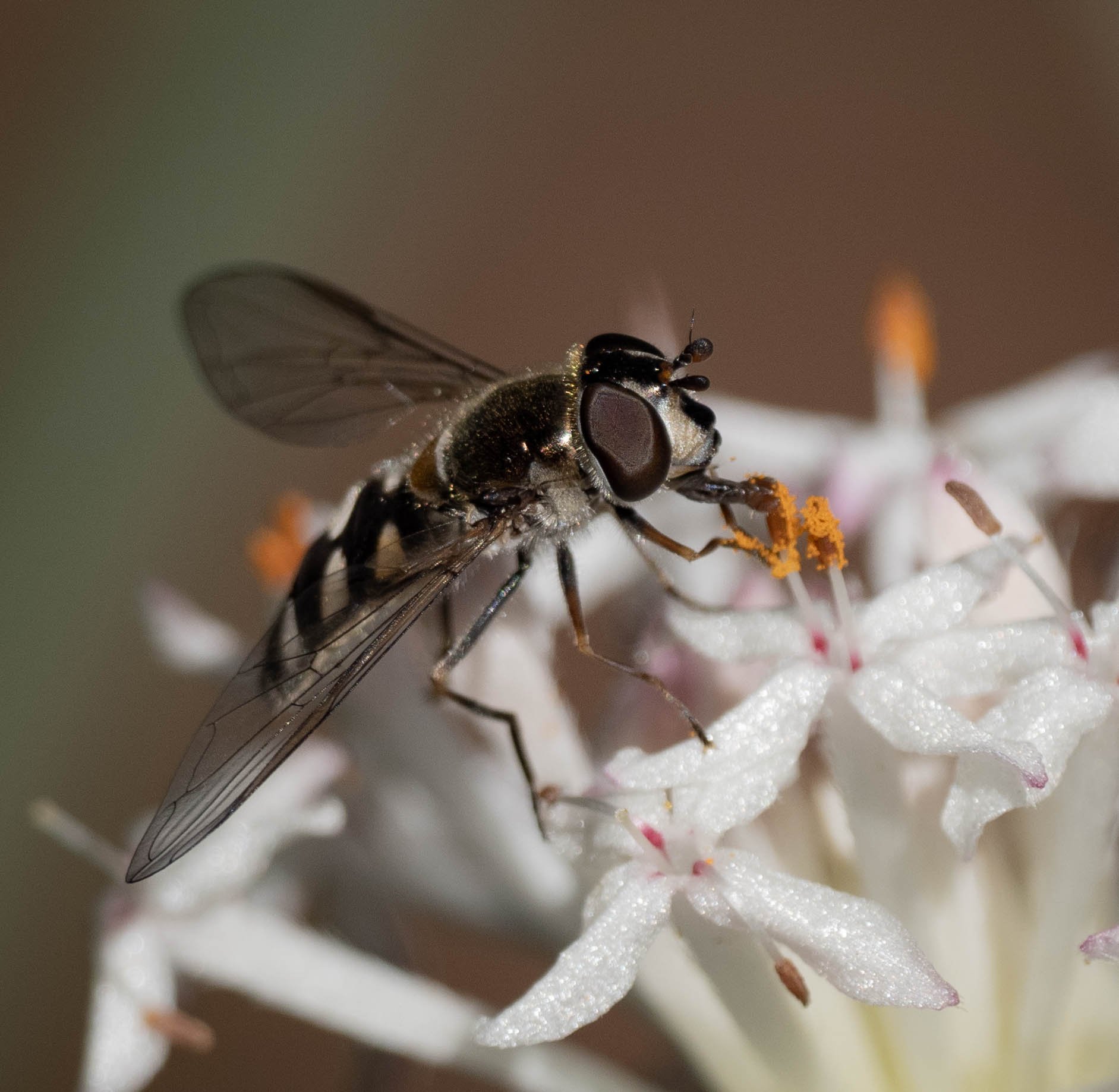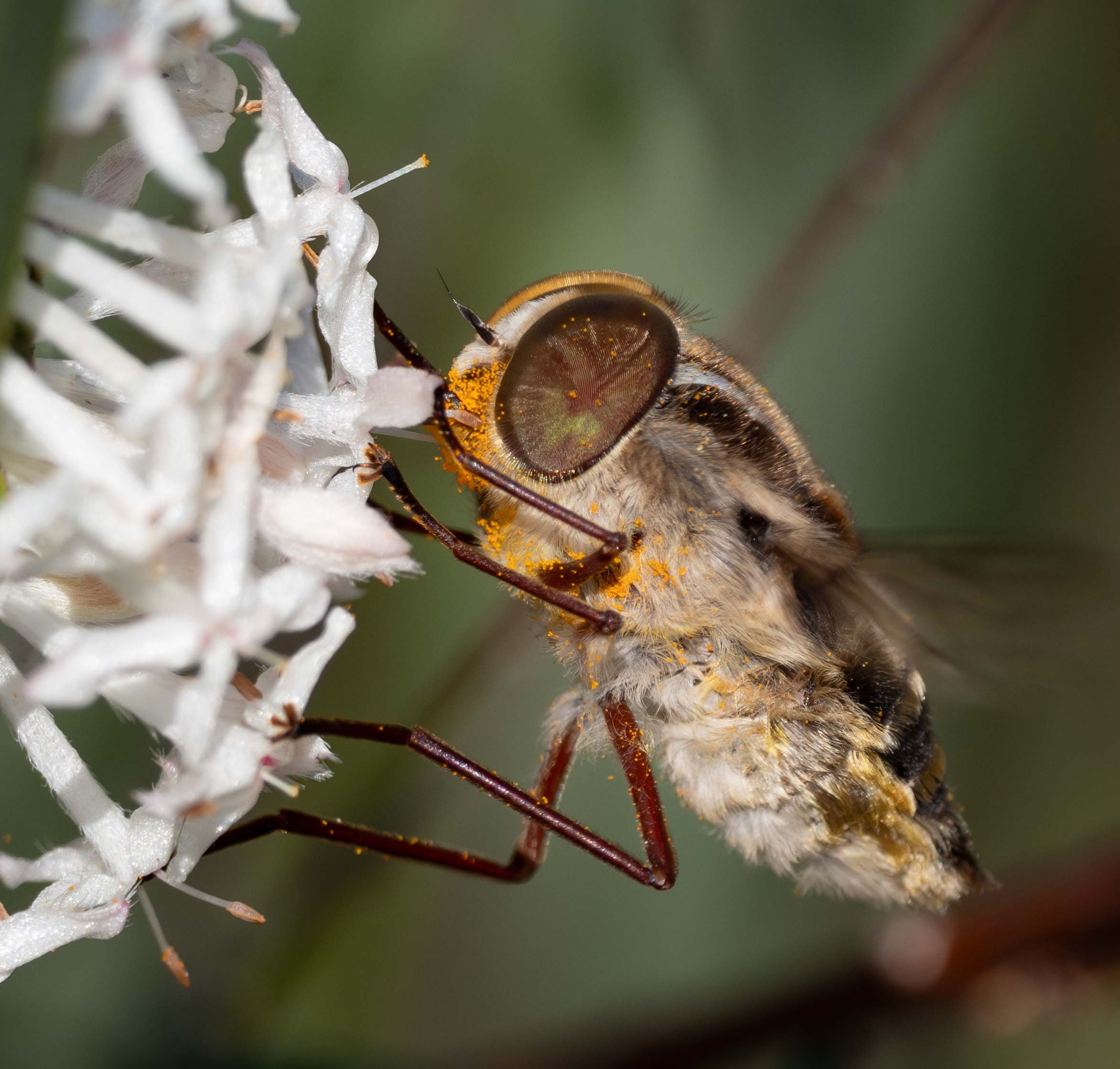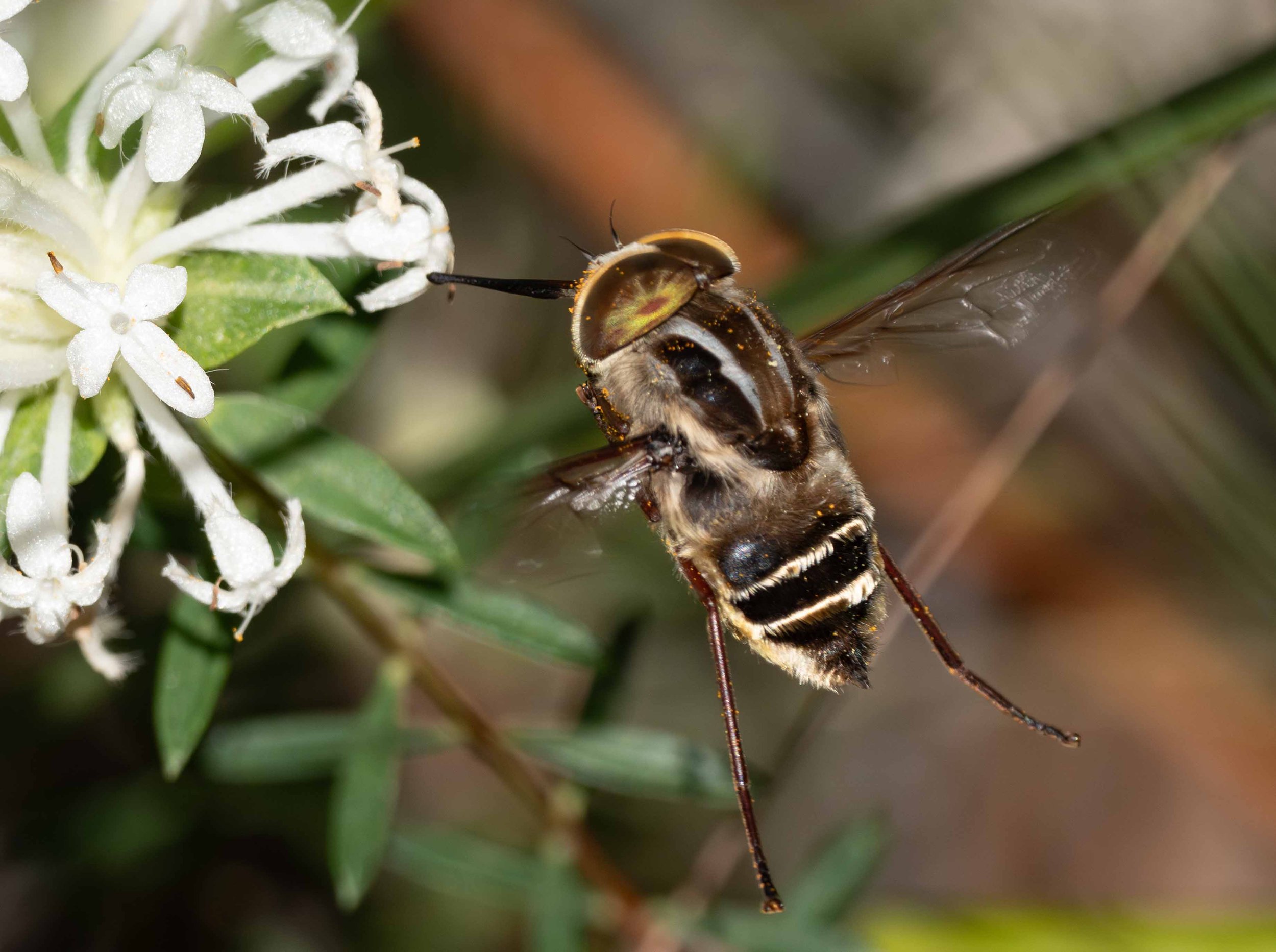
pollen feeding
Hoverflies consume both pollen and nectar. The exposed anthers of Pimelea flowers are readily accessible to these short-tongued flies.
Melangyna (link to iNaturalist record)

effective pollinators
What makes an insect an effective pollinator? Quite simply, it must move between flowers of the same species ... and it must transport pollen. This tangleveined fly (Nemestrinidae) no doubt has the potential to be an excellent pollinator of Pimelea! The bright orange pollen grains cling to its hairy body, as it progressively works from flower to flower, plant to plant. However, unlike hoverflies, tangleveined flies are rarely numerous ... the hoverflies, bees and butterflies no doubt play a more significant role for our local Pimelea population.
Trichophthalma laetilinea (link to iNaturalist record)

an impressive probosics
The very long mouthparts give this fly an advantage over hoverflies. Like the butterflies, and in stark contrast to hoverflies, Trichophthalma can reach the nectar which is held deep within the floral tube.
Trichophthalma laetilinea (link to iNaturalist record)



